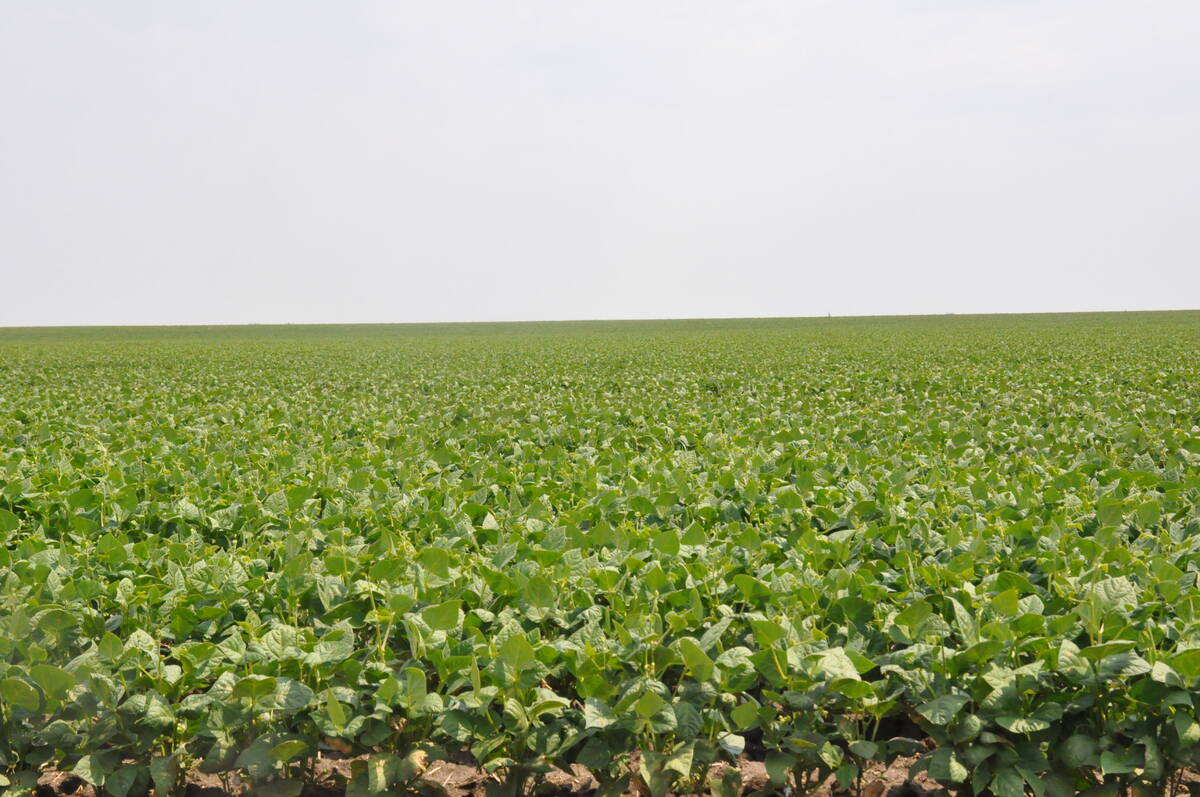MESKANAW, Sask.- A calf bolts when spooked, a steer bunts its handler in the show ring and the winning 4-Her gets showered with water to toast her victory.
Such adventures are commonplace in the Meskanaw-Ethelton 4-H Beef Club, which will mark its 50th annual achievement day June 27.
Grant Wilton, a club leader for the last 12 years, said the club has survived when many others have folded largely due to a strong local community and parents’ willingness to lend a hand.
Wilton, a former 4-H member who raises cattle and grain at Meskanaw, said all four of his children have been or are involved in the club.
Read Also

Coloured bean production down, whites are up
Bean prices have been slumping and the outlook is for more of the same.
His oldest daughter formed a 4-H club in Melville, Sask., where she teaches. Her grandfather Howard Wilton led the Ethelton group for more than 40 years and served as one of the Meskanaw beef club’s first leaders.
Grant’s son Murray, 23, called 4-H “a family thing” that allowed him to work with animals, travel to shows and make friends outside school.
The 24-member beef club today includes a larger district than it did when it began in the 1950s. It briefly became a multiple club in the 1980s, offering crafts and grain, before returning to beef.
Today it includes a new program added in the 1990s for 4-Hers up to 10 years old called Clover Buds, led by Mona Holmquist of Kinistino. Grant Wilton enjoys watching the individual Clover Buds movement to the senior ranks of the club.
“It’s rewarding to see that kind of progress,” he said.
For him, it has also been a learning experience, gaining information to help his own cow-calf operation from the many seasoned cattle producers present at 4-H shows.
The club regroups each October and meets one Sunday every month until the achievement day and regional show in summer.
A 4-H handbook guides leaders but the adults’ own experience supplements that information, said leader Jim Wright.
Children learn animal care from halter training, feeding, washing and grooming the animal, to record keeping and public speaking. Recreational activities include swimming and curling, where the club’s senior team advanced to a provincial 4-H competition this past year.
Parents oversee calf care, said Wright, whose daughter Katie has been a member for four years.
He said members get a clear understanding of what it takes to raise a beef animal. They also learn to get along with others.
“They learn to work with their parents on the farm, learn to be safe around the stock and provide stock with the essentials to be productive and healthy,” said Wright.
His daughter, who wants to be a veterinarian, likes spending time with her show animal and all animals at their farm. She explained that the more time spent with an animal, the more tame it is in the ring.
Her fellow 4-Hers employ similar strategies to calm their beasts.
Launne Jack keeps the radio on in the barn to get her steer used to noise. Even so, she recalled one getting spooked and bolting from the wash racks, only later to be found nestled back in its stall.
Trevor Wilton has been stepped on and kicked in the head by an animal.
Matthew Holmquist said a ribbon blowing in the wind was enough to spook his steer.
The animal jerked back, took a sharp turn, flipped and knocked Holmquist unconscious.
In addition to the highs and lows of showing cattle, Danielle Lefebvre said the club has helped her learn more about agriculture.
The calf sales each summer also allow members to save money for university, said her younger brother Travis.
Grant Wilton noted the club also helps a wider group by selling a heifer and donating as much as $3,500 in proceeds to a charity each year.
His mother, Grace Wilton, said there is good value in belonging to 4-H, although it faces stiff competition from myriad activities available to today’s youth.
“There weren’t so many other things 30 years ago,” she said of the club’s early days.
Registration fees have gone from 20 cents in 1955 to $53.50 this year, but remain lower than many other club or sports fees due to the efforts of volunteers and fund-raising projects.
Grace called 4-H a family activity that can prepare youth for a future in farming.
In future years, she hopes the club can increase its membership and provide more competition for members at shows.














